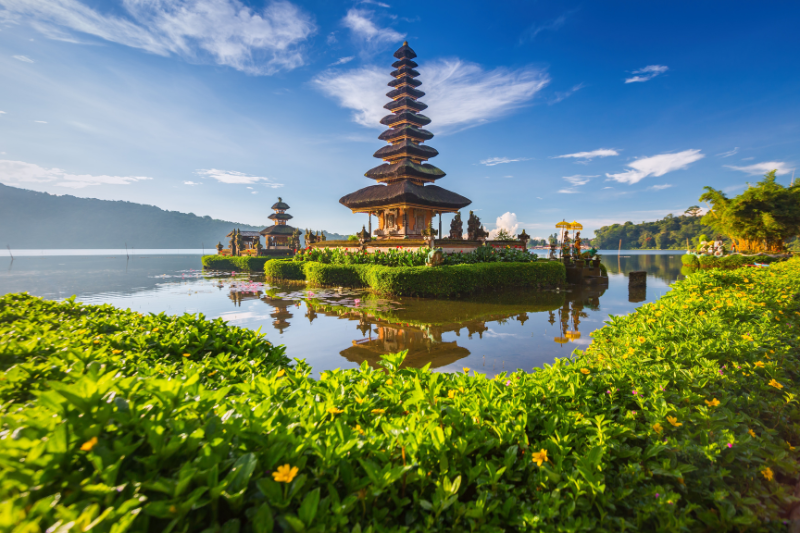Bali is synonymous with paradise—sun-kissed beaches, lush rice terraces, and vibrant sunsets that paint the sky in shades of fire and gold. But there’s more to this Indonesian island than surf and sand. To truly experience Bali is to connect with its spiritual heart: the temples, rituals, art, and daily rhythm of life that offer travelers not just a vacation, but a sense of transformation. This post takes you beyond the beach clubs of Seminyak and into the sacred, soulful side of Bali that many visitors overlook.
Start in Ubud: Bali’s Cultural and Spiritual Core
While many tourists flock to the southern coasts, those seeking depth and culture gravitate toward Ubud. Set among rice paddies and jungle-clad ravines, Ubud is Bali’s beating heart for the arts, wellness, and spirituality.
Begin your journey with a sunrise walk along the Campuhan Ridge, where a peaceful trail winds between palm trees and verdant hills. It’s the perfect place for morning meditation or simply soaking in the serenity.
Then dive into the town’s cultural scene. Visit the Agung Rai Museum of Art (ARMA) or the Neka Art Museum to understand the island’s unique artistic traditions, which blend Hindu, Buddhist, and local animist beliefs. Don’t miss a traditional Legong dance performance in the evening, usually held in temple courtyards under the stars.
Temples That Touch the Soul
Bali is home to over 20,000 temples—some large and majestic, others small and hidden behind homes or nestled in rice fields. Each temple is more than just a site; it’s a living, breathing part of Balinese life.
One of the most iconic is Pura Tirta Empul, located in Tampaksiring. This water temple is famous for its holy spring, where locals and pilgrims alike perform purification rituals by bathing under 13 sacred fountains. Participating in this ritual can be a profound and humbling experience—just be respectful, wear a sarong, and follow the local customs.
Another must-see is Pura Besakih, known as the “Mother Temple” of Bali. Perched on the slopes of Mount Agung, this complex of over 80 temples is the largest and holiest on the island. The view alone—temples silhouetted against the volcano and clouds—is worth the trip.
Closer to the coast, Tanah Lot offers a stunning spectacle, especially at sunset. Built on a rocky outcrop in the sea, it becomes dramatically isolated at high tide, and is considered one of Bali’s most sacred sea temples.
The Daily Offerings: Beauty in Small Moments
One of the most beautiful aspects of life in Bali is canang sari—daily offerings made to the gods. These small palm-leaf baskets filled with flowers, rice, and incense are placed everywhere: at shrines, on sidewalks, in front of shops. They symbolize gratitude and balance, two essential principles in Balinese Hinduism.
Watch a local woman as she gently lays an offering on the ground, sprinkles it with holy water, and lights incense. It’s not for tourists—it’s a ritual repeated multiple times a day to honor the divine. Taking the time to notice these moments reminds you that in Bali, spirituality isn’t just practiced; it’s lived.
Wellness Retreats and Inner Journeys
If you’re looking for healing or self-discovery, Bali is a global hub for wellness travel. Ubud, in particular, is dotted with yoga retreats, meditation centers, and holistic health sanctuaries.
Consider joining a retreat at places like The Yoga Barn or Radiantly Alive, where you can practice vinyasa flows in jungle pavilions, take sound healing classes, or even try ecstatic dance. Many retreats also offer Ayurvedic treatments, herbal therapies, and consultations with traditional Balinese healers, known as balians.
For a deeper dive, some retreats focus on detox, fasting, or even silent meditation—ideal if you’re seeking clarity, calm, or a new beginning. Just remember that the real work is internal. The beauty of Bali is that the island simply creates the space for that transformation to happen.
Connect with Nature: Sacred Mountains and Rice Terraces
Nature is a vital part of Bali’s spirituality. Mountains, rivers, trees, and even stones are believed to hold spiritual energy. One of the most sacred places is Mount Batur, an active volcano where pilgrims hike by moonlight to reach the summit before dawn. The sunrise view, with steam rising from the crater and Lake Batur glistening below, is unforgettable.
Then there’s Tegalalang, a village north of Ubud famous for its rice terraces. While touristy at the surface, step away from the photo hotspots and walk among the paddies to feel the quiet rhythm of rural life. These terraces are not just scenic—they are part of subak, a traditional irrigation system and community-managed farming method that’s been recognized by UNESCO.
Sacred Ceremonies: A Living Calendar of Celebration
No matter when you visit Bali, you’re likely to encounter a temple festival, full moon ceremony, or local holiday. Balinese life is guided by two traditional calendars, so ceremonies occur often and vary across villages.
One of the most fascinating is Nyepi, the Balinese New Year, celebrated in March. The day before, enormous paper mâché demons called ogoh-ogoh are paraded through the streets. Then on Nyepi itself, the island falls into complete silence—no flights, no cars, no lights. It’s a day of introspection, fasting, and peace.
Another unique festival is Galungan, which celebrates the victory of dharma (good) over adharma (evil). Villages are adorned with penjor, tall bamboo poles decorated with coconut leaves and offerings. The whole island becomes festive and ornate, with families visiting temples and honoring their ancestors.
Respecting Bali’s Spiritual Soul
As a visitor, it’s essential to approach Bali’s sacred side with respect. When visiting temples:
- Dress modestly: Always wear a sarong and sash, which you can often borrow or rent.
- Don’t enter restricted areas, especially during local ceremonies unless invited.
- Stay silent and observe if you see a procession or ritual. Taking photos is often okay, but always ask first.
- Support local guides or donation-based experiences, especially those that preserve cultural practices.
Final Thoughts: A Journey Inward
Bali’s beaches may lure you in, but it’s the island’s spirit that stays with you long after you leave. It’s in the smile of a priest at a village temple, the aroma of incense drifting through a jungle breeze, and the quiet prayer whispered during a daily offering. It’s in the way you feel more grounded, more awake, more in tune with something larger than yourself.
Traveling to Bali isn’t just about where you go—it’s about how deeply you go into the experience. So yes, enjoy the beach. But also pause. Look around. And listen. Bali is whispering something beautiful, just for you.













